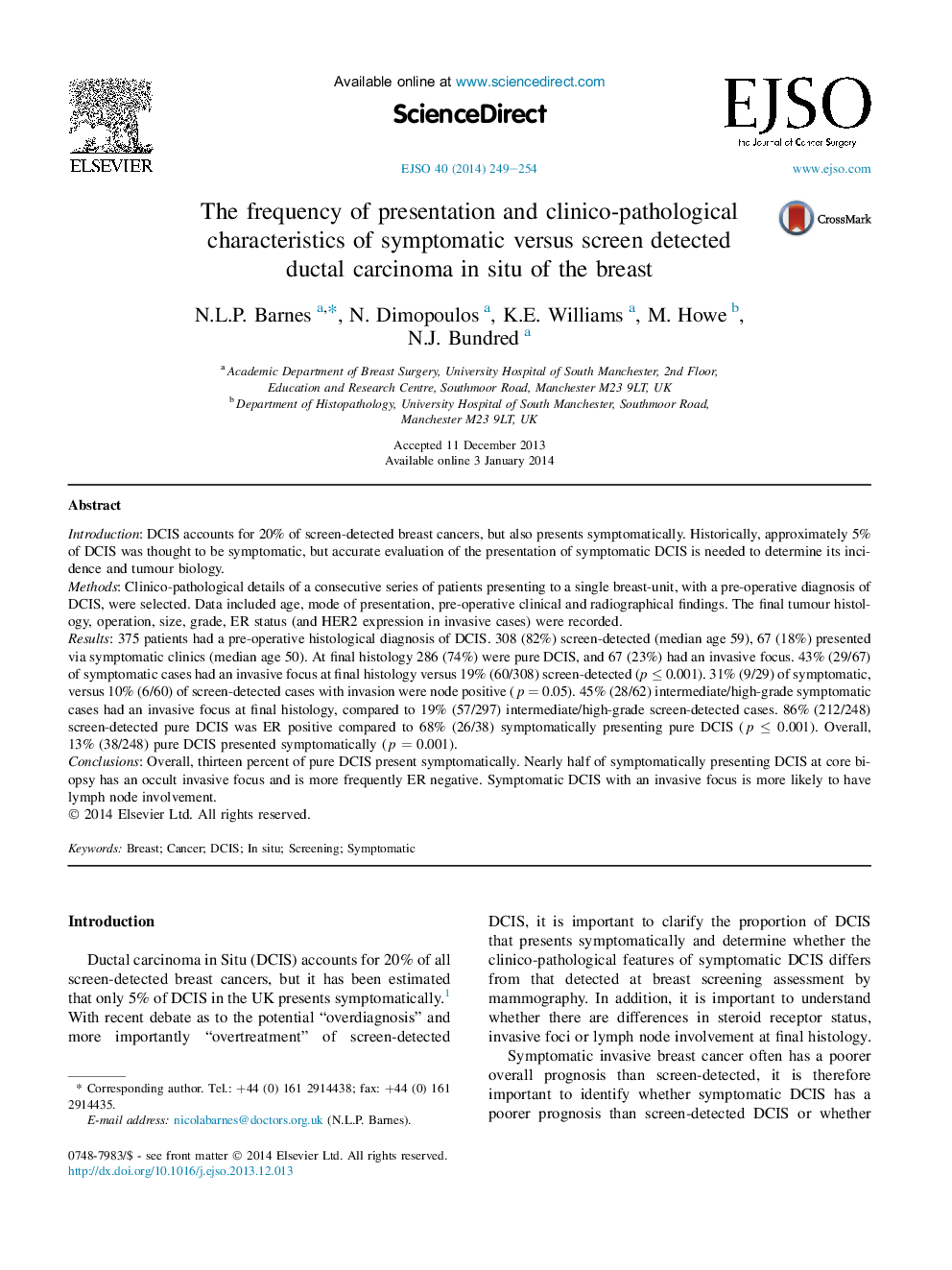| Article ID | Journal | Published Year | Pages | File Type |
|---|---|---|---|---|
| 3985110 | European Journal of Surgical Oncology (EJSO) | 2014 | 6 Pages |
IntroductionDCIS accounts for 20% of screen-detected breast cancers, but also presents symptomatically. Historically, approximately 5% of DCIS was thought to be symptomatic, but accurate evaluation of the presentation of symptomatic DCIS is needed to determine its incidence and tumour biology.MethodsClinico-pathological details of a consecutive series of patients presenting to a single breast-unit, with a pre-operative diagnosis of DCIS, were selected. Data included age, mode of presentation, pre-operative clinical and radiographical findings. The final tumour histology, operation, size, grade, ER status (and HER2 expression in invasive cases) were recorded.Results375 patients had a pre-operative histological diagnosis of DCIS. 308 (82%) screen-detected (median age 59), 67 (18%) presented via symptomatic clinics (median age 50). At final histology 286 (74%) were pure DCIS, and 67 (23%) had an invasive focus. 43% (29/67) of symptomatic cases had an invasive focus at final histology versus 19% (60/308) screen-detected (p ≤ 0.001). 31% (9/29) of symptomatic, versus 10% (6/60) of screen-detected cases with invasion were node positive (p = 0.05). 45% (28/62) intermediate/high-grade symptomatic cases had an invasive focus at final histology, compared to 19% (57/297) intermediate/high-grade screen-detected cases. 86% (212/248) screen-detected pure DCIS was ER positive compared to 68% (26/38) symptomatically presenting pure DCIS (p ≤ 0.001). Overall, 13% (38/248) pure DCIS presented symptomatically (p = 0.001).ConclusionsOverall, thirteen percent of pure DCIS present symptomatically. Nearly half of symptomatically presenting DCIS at core biopsy has an occult invasive focus and is more frequently ER negative. Symptomatic DCIS with an invasive focus is more likely to have lymph node involvement.
